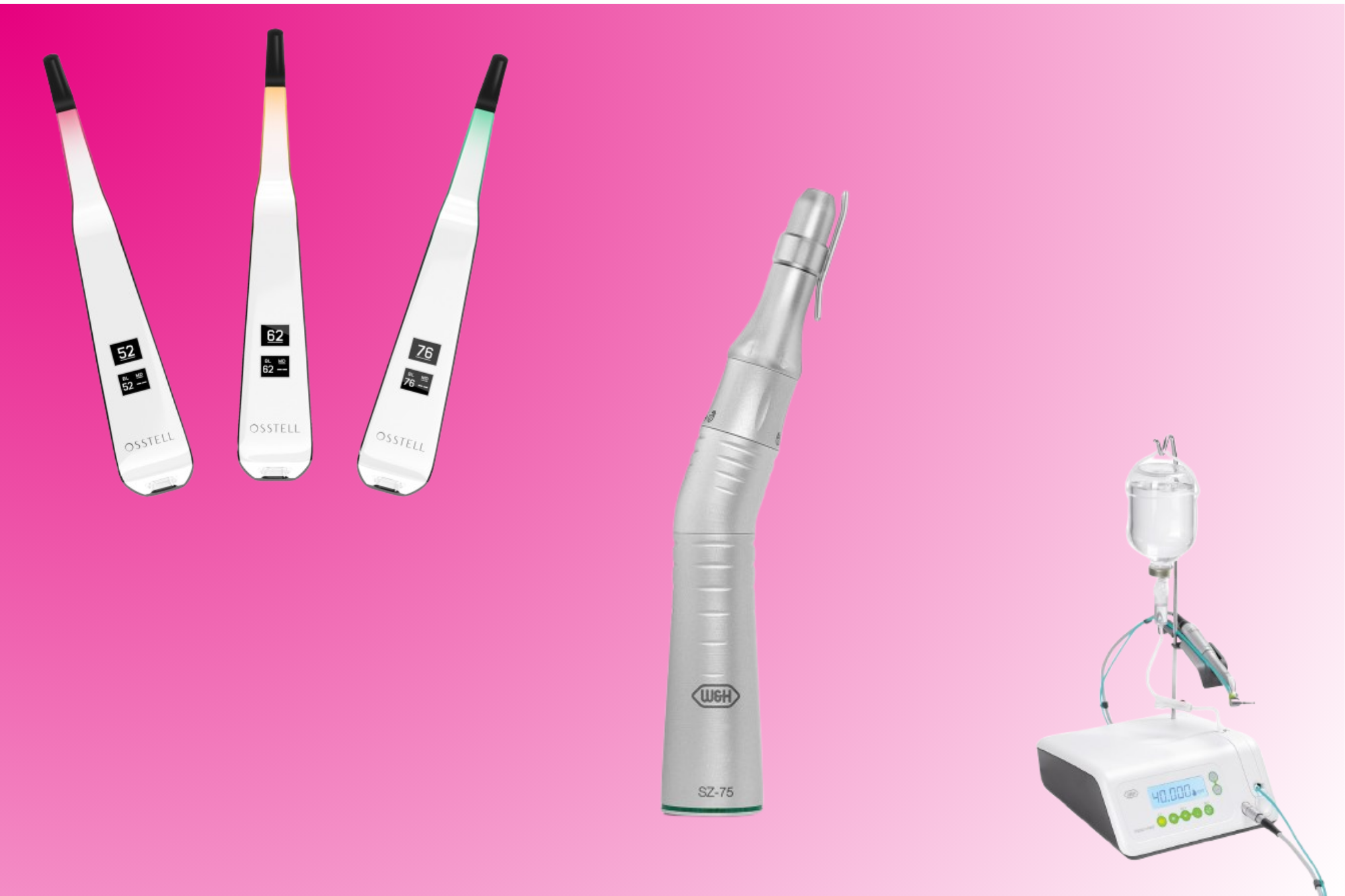DD have been selling dental burs for over fifty years now, and our first and most important piece of advice will always be this: choose the right tool for the job. Choosing the right bur shape for your procedure is one thing, but a bur’s material, its additional features, all can contribute to clean and easy procedures, as well as a bur’s longevity.
We will be writing our guide based on the following four features:
- Value
- Effectiveness
- Longevity
- Support & Compatibility
When making any purchase, such as dental burs, these four pillars should always be considered and measured against each other. A bur may provide great value, but be ineffective at cutting, making it an impractical purchase. Ideally, a bur would be provided at an affordable price, last a long time, have high levels of compatibility, and be very effective at its task.

Value
The following factors contribute to a bur’s overall value and can make-or-break whether or not a bur is worth buying.
Cost-per-use:
Many burs are made to be single-use and disposable to prevent cross contamination. These burs often come in bulk packs and can provide multiple uses per purchase however, a smaller pack of well-maintained burs which are autoclavable may provide more use over time and help you to save more.
Buying in bulk or kits:
Buying in bulk is almost always the way to go. Burs don’t come with a shelf-life, and can often be re-sterilised before use, so they can last a very long time. Buying in bulk helps you to save on price per unit, its only downside is that bulk bur purchases require an amount of space which not every practice can provide. Smaller purchases may be easier on inventory management, but larger purchases are better for value, and mean you’ll likely have more backup burs in the instance of one bur wearing out. See our Unodent Bur Kits below, saving you money and time:
Crown Preparation Kit (BD001)
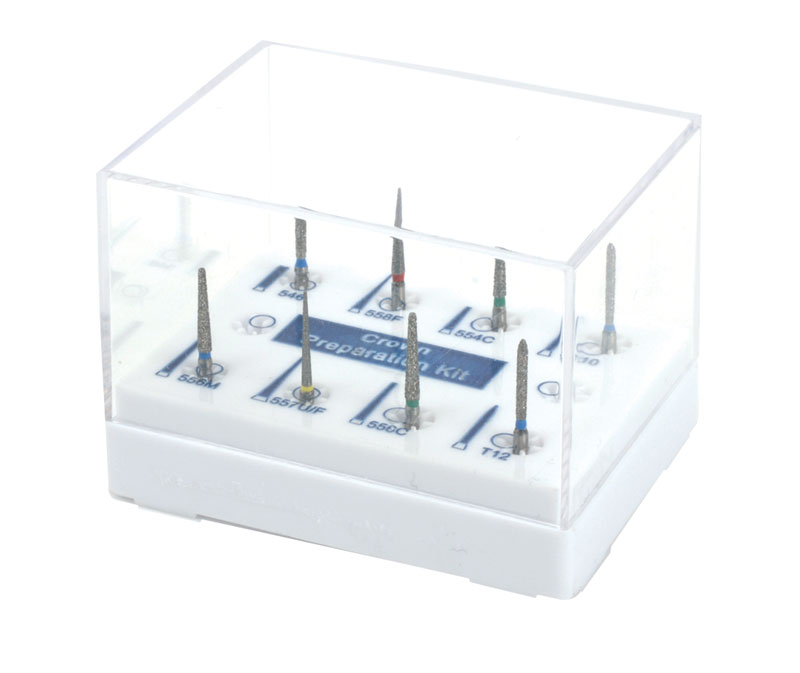
8 diamond burs for bevelling margins, shoulder preparation, bulk reduction, molar and premolar preparation, interproximal finishing, final finishing and crown preparation.
Contains: 290/010, 290/012, 556, 556C, 554C, 557U/F, 558F, 546
Composite & Porcelain Finishing Kit (BD006)
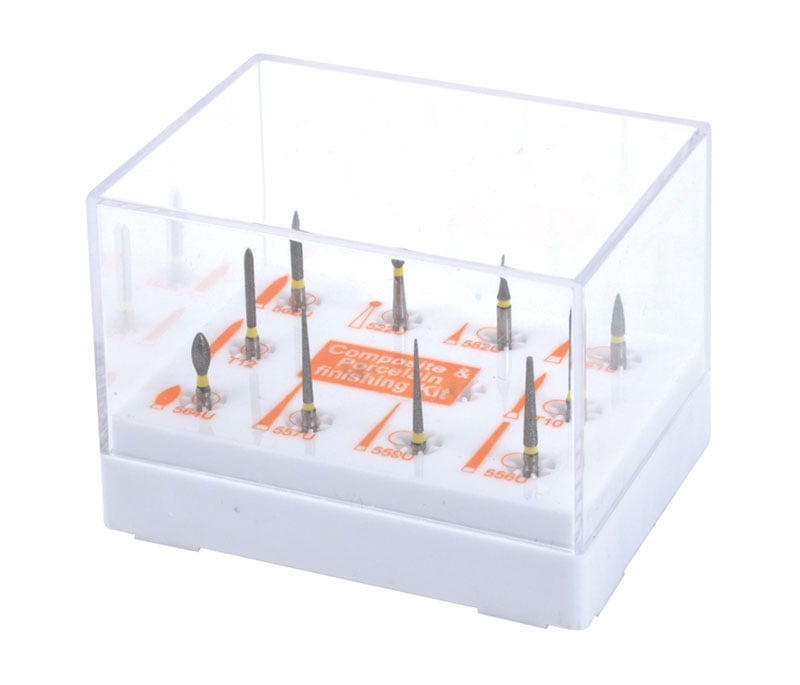
10 ultrafine diamond burs specifically for trimming and finishing composite material, crown preparation finishing, and porcelain veneer after cementation trimming.
Contains: 290/010, 290/012, 556, 556C, 554C, 557U/F, 558F, 546
Cavity Preparation Kit (BD004)
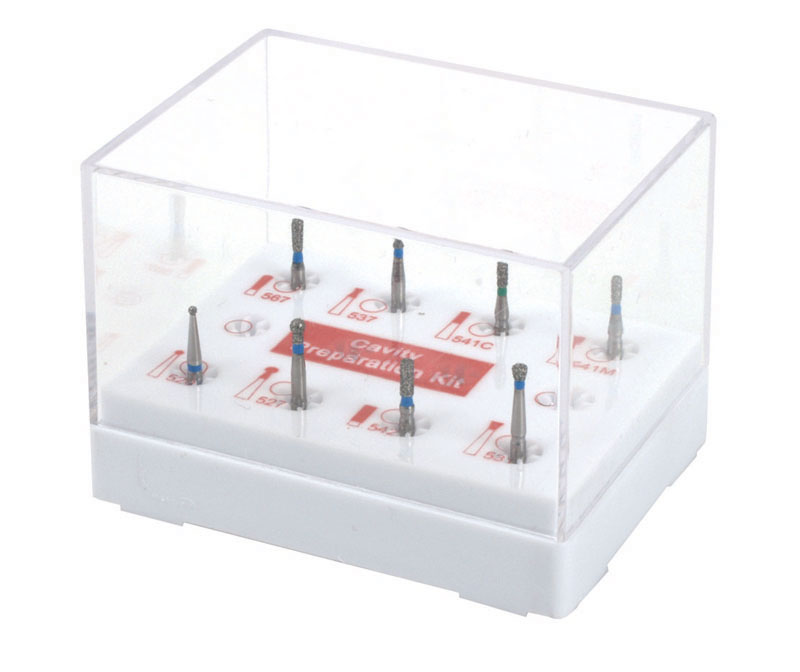
8 diamond burs used for small penetration, cavity preparation, undercutting and extension of cavity.
Contains: 520, 527, 531, 567, 541, 541C, 542, 537
Laminate Veneer Kit (BD008)
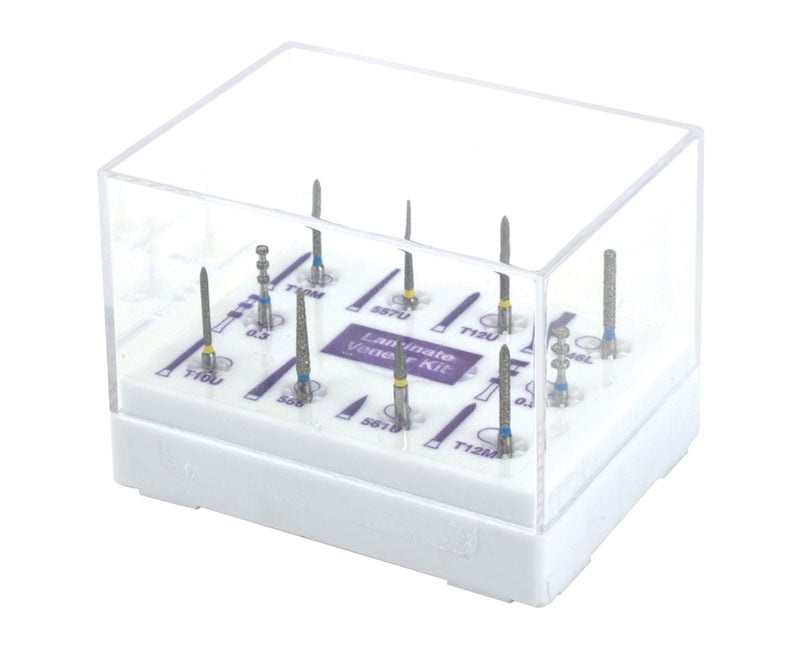
10 diamond burs including ‘Tiger Stripes’ which cut to a depth of 0.3mm or 0.5mm, diamonds to clean off stripes and luting cement, and ultrafine finishers for complete aesthetics.
Contains: Tiger Stripes (0.3mm & 0.5mm), 290/010, 290/010U/F, 556, 546 Long, 557U/F, 561U/F, 290/012, 290/012U/F
Brand reputation vs generic:
Oftentimes, a brand's reputation is deserved. Perfection Plus, for example, are known for their high-quality tungsten carbide burs. However, there are some lesser-known or generic products which rival the quality of name-brand products, without the extra bump to its price tag. Brands such as UnoDent balance the competitive price of generic brands, with the excellent quality of a name-brand bur, and should be considered when making a purchase.
Hidden costs:
Writing about dentistry often risks putting things like burs and their performance in a vacuum, without the complexities a day-to-day practice has to cope with. The truth is, not every procedure can be 100% efficient or simple, sometimes there is increased chair time, longer procedures, etc. which can wear down on burs. When choosing a bur, ensure the bur you choose suits your particular style of performing procedure.
Are expensive burs worth it?
Expensive burs often have superior materials, brand-copyrighted designs, or better builds when compared to generic products. However, there are instances of cheaper burs which also demonstrate excellent levels of quality. Ultimately, we’d advise being willing to spend a little more on a trusted brand, while it may be a larger upfront cost, quality burs can last for a very long time and provide excellent performance throughout their life. While very cheap burs often tend to have a higher likelihood of poor or substandard burs packaged among higher quality burs.
Gold Burs Vs Diamond Burs
Gold burs, sometimes referred to as premium or gold-coated diamond burs make a tempting alternative to your average diamond bur, and here’s why:
- Gold burs tend to be tougher and longer-lived. While diamond burs struggle with lasting after a few autoclave cycles, gold diamond burs maintain their cutting efficacy and bond strength longer than diamond burs.
- This reliability makes them better at cutting or performing material removal, as they remain at (or near to) peak efficiency for longer. Potentially meaning safer and easier procedures.
- Gold burs are biocompatible and have preferable heat distribution to their stainless steel & diamond counterparts, which may help to prevent overheating.
Ceramic Vs Other Polishing Burs – Is cheaper better?
Ceramic burs face heavy competition for polishing from other types of bur, whether it’s fine-grit diamond alternatives, or rubber polishing discs. This competition is largely because ceramic burs tend to be slightly more expensive than some other polishing burs.
However, ceramic has several benefits unique to its material type. Ceramics are highly biocompatible, very durable, and have outstanding heat resistance and distribution. Ultimately, an investment in a ceramic bur for polishing over another bur will be a question of whether you would prefer to have a single, longer-lasting bur, or multiple other types of bur which may need replacing after only a few uses.

Efficacy
The efficacy of your dental bur depends very heavily on whether or not it is being used for the right task. A spiral bur would not be used to polish, just as a ceramic polishing bur would not be used for cutting. What determines a bur’s ability to perform a task is the following:
Material
The material of a bur is a critical part of how well it will be able to perform any given procedure. Diamond burs, for example, are used primarily to grind tooth material and porcelain, for precise polishing of tough material. Whereas Tungsten Carbide is used in cavity preparation and is excellent at cutting.
If you would like to see an extensive, in-depth discussion on the merits and applications of each dental bur material type, please see the Ultimate Guide to Dental Burs.
Grit
Grit is the term used to categorise the abrasive material on a diamond or zirconia dental bur. The higher the grade of grit, the more coarse the material. Coarse grit creates a rough surface, and is used for quick, rough shaping of tough material, or bulk material removal. Fine creates a smoother surface, and is less abrasive. This is a term used only for diamond burs, as diamond is better suited to shaping and bulk material removal than other materials. Grit has the following colour codes to correspond with their abrasion:
- White - Superfine
- Yellow - Extra fine
- Red - Fine
- Blue - Standard
- Green - Coarse
- Black - Super Coarse
Shape
Similarly to bur material, bur shape dictates much of how a bur can be used. Round burs are the tool you need for removing large amounts of tooth decay, preparing cavities or creating access points/channels for blades. Pear burs are what you need for creating an undercut for filling materials, trimming and finishing. To see a full review of bur shape and how this impacts usage, please see Ultimate Guide to Dental Burs.
Shank length
The length of a bur’s shank will help to determine how it is used in two impactful ways. Firstly, it alters the manoeuvrability and visibility of a bur, as well as its reach. A longer shank bur might be better for providing access to, say, molars in the back of the mouth, but this improved access comes at a cost, the long bur shank may make it harder to see into the mouth. Secondly, the length of the bur shank will determine the operative depth of the bur. A shorter shank will potentially not be able to cut too deeply into a tooth.
Operator preference & tactile feedback:
A lesser-known display of quality lies in how a bur feels to use. We discuss this in ‘hidden costs’ but specifically, ergonomic, and consistent tactile feedback are other indicators of quality which should not be missed. Ergonomics are self-explanatory, does the bur have the right length and shape for you to use comfortably with your handpiece of choice, but consistent tactile feedback is a more nebulous concept. If you know how a bur feels when in use, how it feels when it’s performing at its best, when too much strain is being placed on it, when it’s time to be replaced, that’s a real benefit, and an indicator of quality.

Longevity
Material toughness
Diamond and tungsten carbide are known for being some of the hardest-wearing materials. Materials such as steel are often softer and more likely to chip or be worn down than tungsten carbide. Diamond also wears down quickly after multiple sterilisation cycles.
Reusable vs disposable, the bur debate
Disposable burs are used widely across practices, valued for their efficacy, cheapness, and their decreased likelihood of cross-contamination. While reusable burs may be more expensive, following a proper disinfection and maintenance regime can help keep this type of bur operating at peak condition for a long time, helping you to save money when compared to more frequent single-use purchases.
How often should I swap my dental burs?
When it comes to re-usable dental burs, you only really need to swap one out if said bur begins to lose performance in any way. Bur degradation can cause damage to your patient’s mouth, with increased abrasion, heat, and impaired cutting and accuracy, so replace them as soon as you feel performance beginning to slip.
How should I maintain my dental burs?
If you have a reusable dental bur, having a proper care and disinfection routine is crucial. Cleaning your bur, disinfecting your bur, inspecting your bur for damage or degradation before use are all crucial steps. For more information, please see our blog post on maintaining and disinfecting your bur.

Compatibility & Support
Compatibility By Shank Type:
There are several different types of shanks, all of which are suitable for different situations. These being:
- Friction Grip (FG): Used in high-speed handpieces.
- Latch-Type (LA/RA): For low-speed contra-angle handpieces.
- Handpiece (HP): Used in straight handpieces, often in laboratories. These shank types are large, long, and suitable for slow speeds.
Compatibility by Procedure.
Certain procedures may benefit from having a specific type of bur. For example, if you’re removing a zirconia crown, you’ll need a zirconia bur, for pediatric cases, you’ll need pediatric burs, which are smaller than regular burs. Other examples include finishing burs and laboratory burs.
How do I know if a bur fits my handpiece?
If your bur has the corresponding shank type to your handpiece (I.e. FG, HP, LA) then it should fit your handpiece. Each shank type has a uniform diameter size, which means it should be able to fit into any handpiece of the same type. If a bur's shank does not fit your handpiece, discard the bur.
Dental Bur Buying Checklist:
So, before you purchase a bur you need to consider the following
- What procedure is it for? - Does the Bur shape and material suit its purpose?
- What handpiece do I use? - Is your handpiece a Friction Grip or Latch angle? Make sure your handpiece suits the type of bur you’re using.
- Reusable or disposable? - Will you order a pack of single-use burs, or commit to a care and disinfection plan for a reusable set of burs?
- Priority: Value? Longevity? Speed? - Which of these facets do you consider the most when thinking about a bur?
- Preferred supplier? - Do you have a preferred supplier? We’d always recommend using burs you’re familiar with, so you can understand the tactile feedback & limits of each bur.
Where can I buy dental burs online in the UK?
DD is the one-stop shop for all your dental equipment needs, and that includes burs! Our ranges are packed with high quality CE-marked and ISO-certified options.
Shop Dental Burs NowFAQ
What’s the best bur for cutting zirconia crowns?
The best bur for cutting a Zirconia crown is a zirconia or diamond bur, as they have the requisite hardness to cut through this tough material.
What’s the difference between diamond and carbide burs?
Diamond burs are ideally used when polishing and cutting enamel, whereas carbide burs are often better for cutting dentine and restorations. Carbide burs are also generally harder-wearing, able to withstand multiple sterilisation cycles without losing performance. If you want to know more, please see the materials section of extensive post ‘The Ultimate Guide to Dental Burs’
Should I use different burs for different patients?
Provided the bur you use is re-usable, has been sterilised, maintained, and is suitable for the procedure at hand, you should be able to re-use it for a different patient.
Are reusable burs more cost-effective than single-use?
Reusable burs may cost more immediately but have the potential to be a better long-term investment. Reusable burs require a sterilisation and maintenance plan. If followed, a single reusable bur may be able to outlast many single-use burs and save you money.
How do I choose the right grit size?
Your grit size corresponds with the task at hand, for finishing and polishing, think fine or extra-fine. For cutting or bulk material removal, consider coarse. For a full breakdown of dental grit sizes, visit our guide.
What factors affect the lifespan of a dental bur?
The lifespan of a dental bur can be impacted by many things, how often it is used, if it is exposed to excess heat, its maintenance and cleaning routine, the condition of the handpiece it is used in, and the hardness of the materials it is used to cut.

